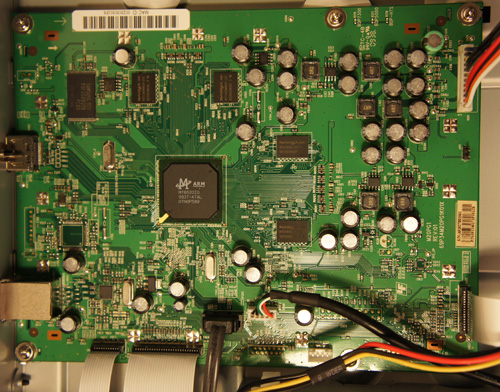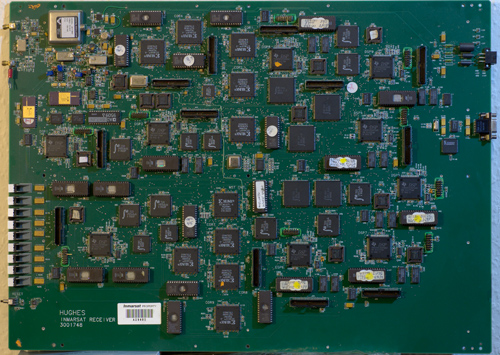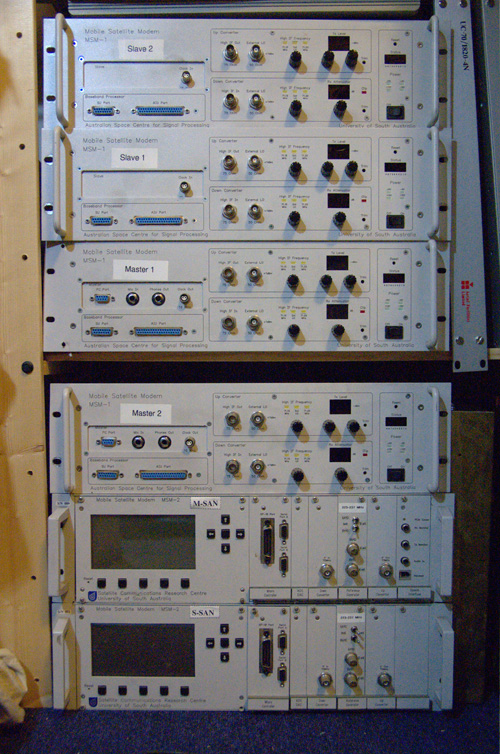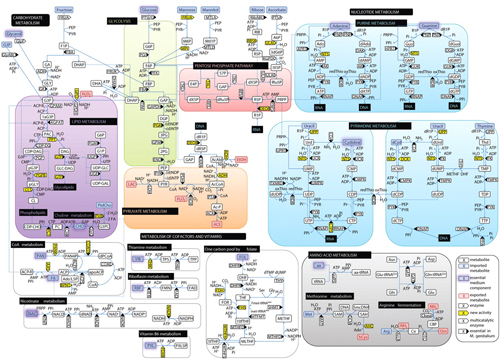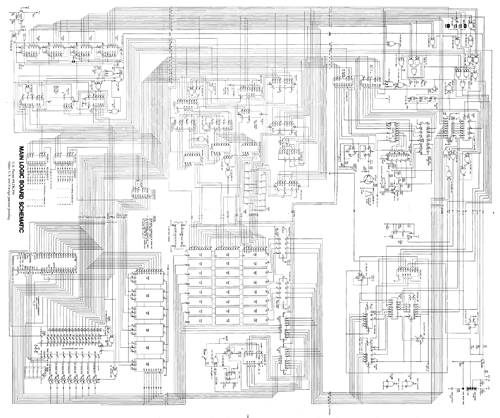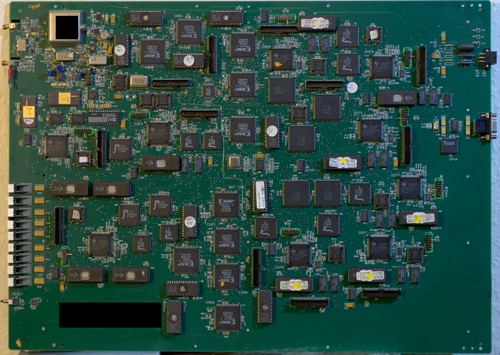The Ware for January 2011 is a BluRay optical pick-up head. There aren’t too many good photos of these on the web, although I did find a fascinating tear-down of the unit used inside a Sony PS3 from 2007. This particular unit is from a Lite-On OEM module manufactured on October 15 2009, from an HP BD-2000 BluRay player. Below is a photo of the motherboard from the BD-2000 player.
One notable features of the pickup-head is that the entire optics assembly — the piece with two lenses on it molded out of white plastic — “floats” on six whiskers of wire. Three of the whiskers are visible in the front. The entire assembly is buttressed by a set of voice coils that manipulate the assembly’s position by pushing against adjacent fixed permanent magnets. If you take a pair of tweezers and poke the assembly it jiggles freely. The mechanical design ingenuity and manufacturing tolerance that goes into making this is impressive, especially for a low-cost mass-market item.
Back when I designed nanophotonic integrated circuits at Luxtera, we had a problem with aligning single-mode fibers to grating couplers on the surface of a wafer. The single mode fiber alignment problem typically requires expensive manufacturing equipment and highly trained operators to get the laser lined up in three dimensions to within a micron of the optimal launch spot, after which the whole assembly is glued in place. This is a bummer, because if the glue shifts during setting or the operator makes a mistake, a very expensive optical assembly is lost.
Thus, I find it amusing that this low-cost assembly can do that and more, on the fly. According to this white paper, an optics assembly like this can achieve a tracking error of 8 nanometers on an assembly that’s moving around, thus allowing dynamic tracking of the laser spot onto media with a track pitch of 320 nm, much smaller than the micron or so spot size of a single mode fiber.
As for the winner this month, it’s Felix. I actually learned quite a bit reading his entry; for example, I didn’t know that the circle segments on the PCB were for ESD management. Thanks for the detailed lesson. Congrats, email me for your prize!
